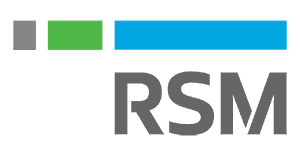
5 Key Areas Where Banks Can Implement Automation Solutions
Brought to you by RSM US LLP

As automation has become more widely available to the financial services industry, banks need to take advantage of automated solutions to streamline manual systems and processes and maintain a competitive edge.
But they would be mistaken to seek out automation only for a solution to a specific problem; rather they should take a holistic approach to automation and craft a strategy that incorporates automation in a variety of ways that could potentially improve many functions of their business. While commercial, off-the-shelf software exists for specific automation use cases, banks need to understand how automation fits into their broader business strategy and how to weave it throughout the organization’s processes. This allows leadership teams to understand where a customized approach is necessary and where turnkey solutions may be suitable.
There are five specific areas that banks should assess for automation readiness and efficiency gains.
1. Customer experience. A frictionless customer experience is a standard expectation in many industries; banking is no exception. In the past, if a customer wanted to open a deposit account at a bank one month and take out a loan the following month, the bank might require two interactions with two different employees to gather data from that customer. But there are process enhancements that can automate and streamline these processes to remove the redundancy and enhance the customer experience.
Automation can streamline the intake and digital cataloging of customer information, pulling that data together into a single place and data set that employees from various functions of the bank can query and use. The consistency of information makes the experience more palatable for the customer, and more efficient for employees.
2. Credit approval and loan operations. A typical commercial loan application and approval process can require the loan applicant to submit a significant number of documentation items and pieces of information to the bank. Using an automated tool to gather, process and organize that information can significantly cut the cycle time for the loan application, approval and origination process. Additionally, an automated process on the front end enables the loan operations process on the back end of a transaction to be more efficient and seamless, as employees can access all of the electronically obtained information in an organized format.
Automated solutions for credit and loan operations – one example of which is highlighted in this case study – can result in better information for banks and quicker decisions for applicants. Banks can use automated solutions to integrate with credit bureaus or other data providers via application programming interface (API), and apply credit policies throughout underwriting.
3. Data management. Most banks have numerous data sets that can be queried separately but not all together. What this can mean from a lending perspective is that a bank may have a commercial loan system, a retail loan system and a credit card system; all of those systems could have different outputs, which could make it difficult to analyze data and have a holistic and meaningful view of the customer’s relationship, profitability and risk profile.
Organizations should explore how automation solutions may improve their existing infrastructure and make their data more relevant and useful by enabling real-time reporting to build a more complete profile of the customer.
4. Automation tools can vastly improve the intake and data maintenance process required to comply with Know Your Customer (KYC) regulations. Automation can replace manual process during customer onboarding and ongoing monitoring and verification efforts. Compliance automation creates a uniform process and data set that the bank can use throughout the customer lifecycle, rather than on an as-needed basis, when onboarding is completed or when monitoring items arise.
5. Streamlining the audit function. As we highlight in this case study, automation can help a bank’s internal audit department “spend less time gathering data and scoping audits and more time on fieldwork such as testing hypotheses, assessing risk management, and reaching conclusions using a datacentric approach.” In that specific case, a bank used an intelligent automation solution to identify gaps and pain points in how it quantified risk during the audit planning process, accelerated its planning process and incorporated various data sources, such as consumer complaints and regulatory standards, into the audit plan.
Automation can improve virtually any function of a bank’s business, but organizations may find it daunting to determine where or how to begin implementing such solutions. Discussing options with a third-party advisor can help bankers craft a valid and thorough automation strategy that incorporates all the advantages of automated capabilities that might be relevant and available. This strategic approach maximizes efficiencies for the bank, while providing a best-in-class customer experience.


